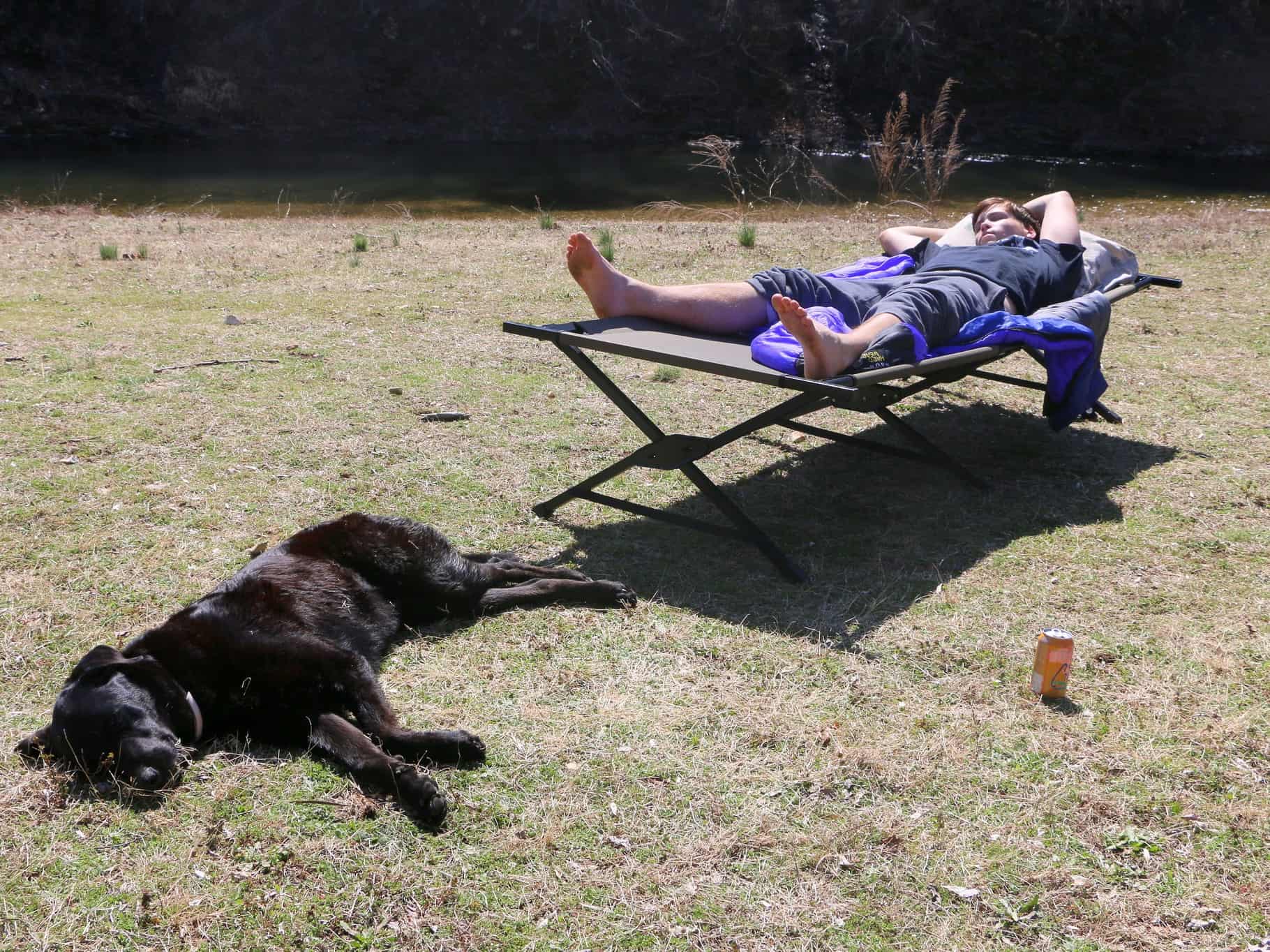Both cot and hammock elevate you off the ground, offering you a comfortable night’s sleep.
Cots generally lay level allowing you to stretch out flat. They provide better back support for those who prefer a firm sleeping foundation.
On the other hand, tied between two trees, hammocks have more of a gravity curve. This allows you to rest in a slightly reclined position, and you can adjust it to your liking.
While both get you off ground, neither do well at preserving body heat. In colder weather, both require sleeping pads for better insulation.
Because of being elevated off the ground, the cold air is allowed to flow underneath your body. This presents a huge disadvantage in the colder months, but can certainly keep you cooler in the summer.
Now, while you won’t be on the dirty ground, you may still want the luxury of a shower. If this sounds like you, check out our Best Portable Shower for Camping post.

